I am eager to fix my front lawn this year. When we installed a solar array last fall, we had to dig some significant trenches through the garden. They reseeded the lawn where it was damaged, but somehow, I have no turf grass and instead a bright green swath of crabgrass. My plan is to reseed a new lawn and get it established as soon as the first frost kills the crabgrass. Hopefully, the weather will work with me, and I can change the mixed-up mess of a lawn this fall so that I have something a lot better looking and healthy before the weeds even think about growing again next spring.
I’m hoping to take advantage of the natural wetness and relative lack of birds that autumn promises. Fingers crossed, I’ll get some new, better grass established.
My new grass will be the standard fare…but I wish that I could grow the fabulously bumpy and lumpy low-maintenance, drought-tolerant Korean No-mow Grass, also known as Zoysia Tenuifolia.
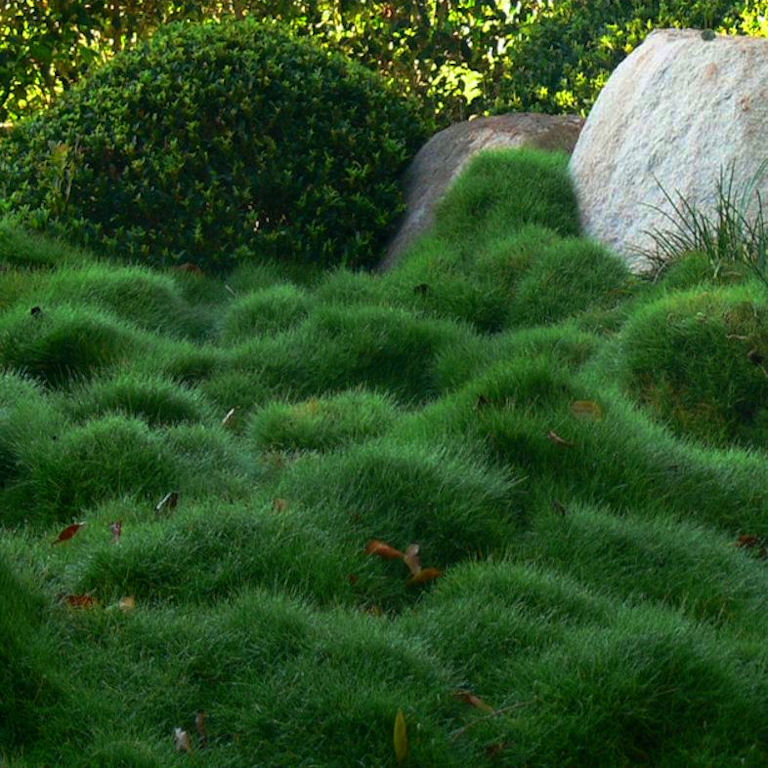
Can you imagine rolling around on this grass…it would give you a back massage!
-Rochelle
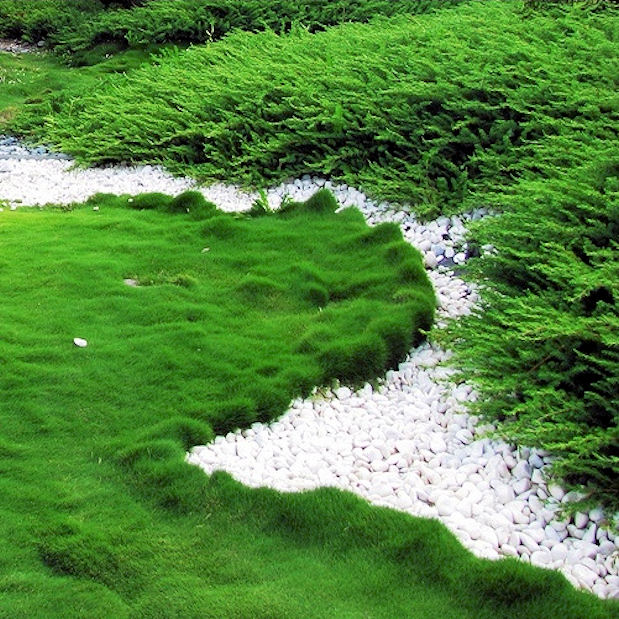
Korean No-Mow Grass
images from Tranquil Havens
Zoysia tenuifolia
Ogawa Kazumasa
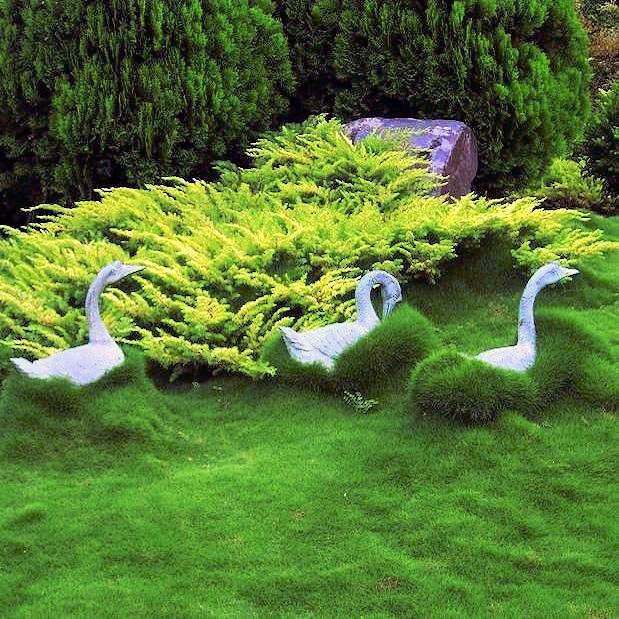
Zoysia Tenuifolia – Korean No-Mow Grass
This grass is known by a few common names:
- Korean Velvet Grass
- No Mow Grass
- Mascarene Grass
- Temple Grass
- and of course, the Latin name – Zoysia tenuifolia
Zoysia tenuifolia, also known as Korean No-Mow Grass, offers a perfect blend of practicality and beauty, making it a standout choice for any garden or landscape. The plant will survive in zones 5-10 but it isn’t a great lawn alternative unless you are in a very warm or tropical environment because it will brown and go dormant with even the slightest chill.
Zoysia tenuifolia is best for the southern United States (Florida, Southern California, and reliably warm areas of Gulf Coast states like Alabama, Georgia, Louisiana, and Texas). It is also fantastic in the warm and dry climates of the Mediterranean and Australasia.
It has a cushiony texture that creates a lush, green carpet that’s visually appealing year-round, with minimal effort required to keep it looking its best. One of its most attractive features is its low-maintenance nature—this grass grows slowly and densely, meaning it needs little to no mowing, saving both time and energy. Zoysia tenuifolia is incredibly drought-tolerant, thriving with far less water than typical lawns.
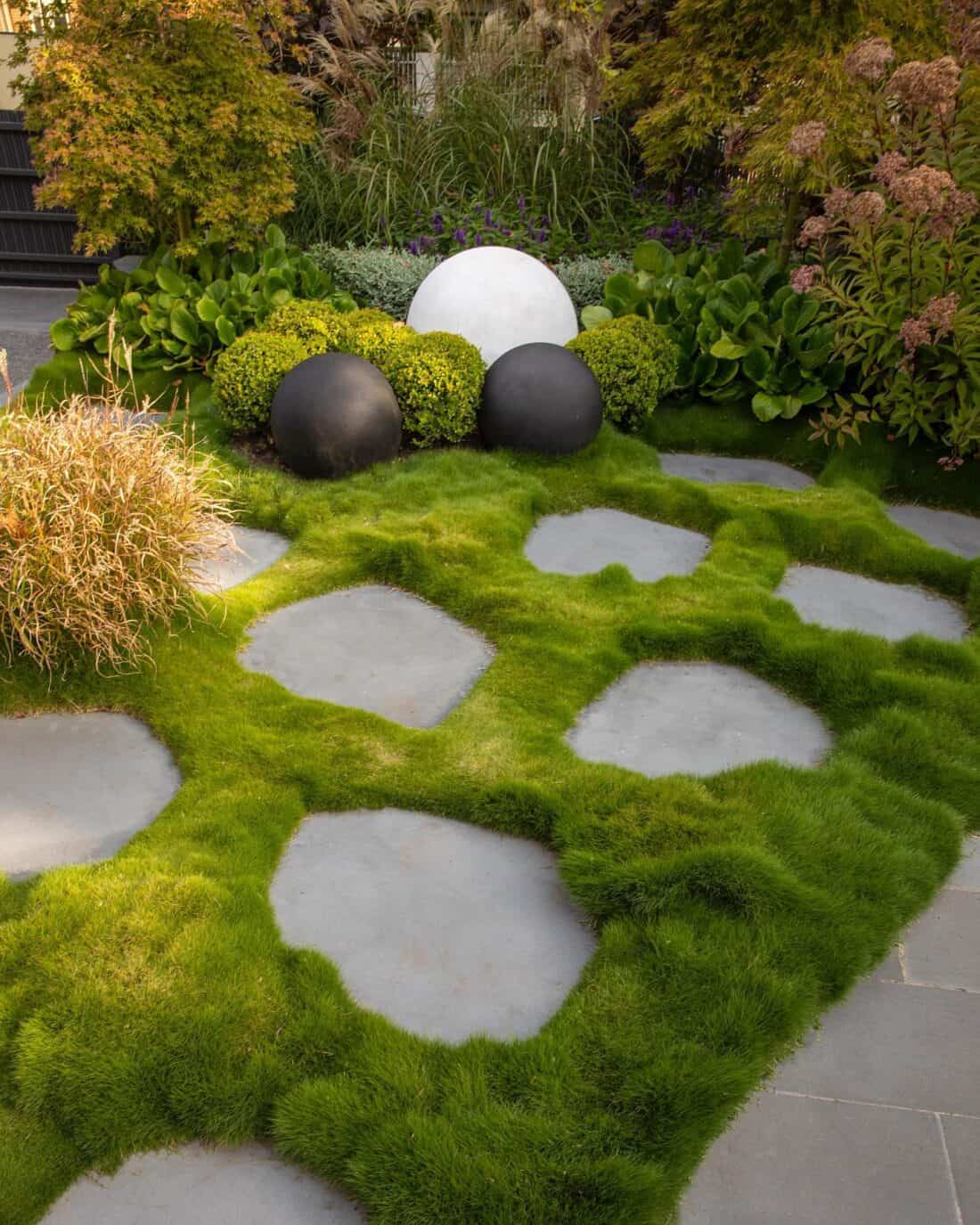
Using Korean No-mow Grass in Garden Design
With its soft, fine-textured, and dense growth habit, there are a variety of ways to incorporate Korean No-mow grass into your landscape:
- Create a Korean grass lawn – big or small an area planted with this grass will get bumpier and more gnarly as it matures.
- You often see zoysia no-mow grass used in Asian gardens, and it is really nice planted between rocks and stepping stones.
- Use it anywhere you might consider other low maintenance and waterwise ground covers. (jsut remember it will only be evergreen in climates where it is reliably warm all year round).
- I am increasingly seeing it used in large open lawn areas where there is no requirement for a flat play surface.
- Consider it around a pool deck or as a foil or edge to a flat lawn (planted with an appropriate turf for your area) or meadow.
- If you have berms or stone walls that have areas for planting, this is a great plant to fill int he gaps and grow where other plants might struggle.
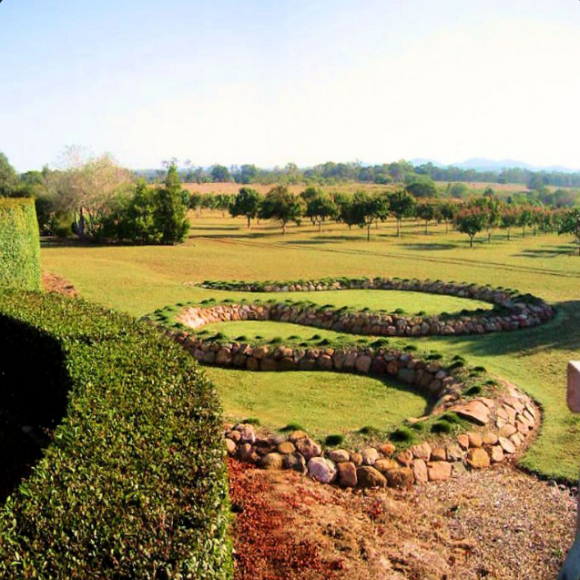
The reported downside to Korean grass ground cover is that it doesn’t love really cold temperatures (it browns and goes dormant when it is chilled), and if it browns where you live, it can be slow to green back up in the spring.
Planting Zoysia Tenuifolia – Korean No Mow Grass
Korean no-mow grass is also reportedly slow growing but I think this is notion worth challenging. How fast an area fills in is primarily a function of how big the plants are when you plant them and how close you plant them.
Zoysia is best planted from potted plants (plugs may be an option, but they will take much longer to grow together). I have not seen a successful project from seed (though that does not mean it doesn’t exist).
Projects I have witnessed (when planted in ideal conditions) are using 6″ to 8″ pots and planting them on approximately 1 ft centers. This is resulting in a solid cover in about 6 months. The longer it takes to fill, the more you iwll have to maintain the unplanted areas and keep them weed free. So you want to plant for quickly acquired density.
Some Great Bumpy Grass Design Inspiration:
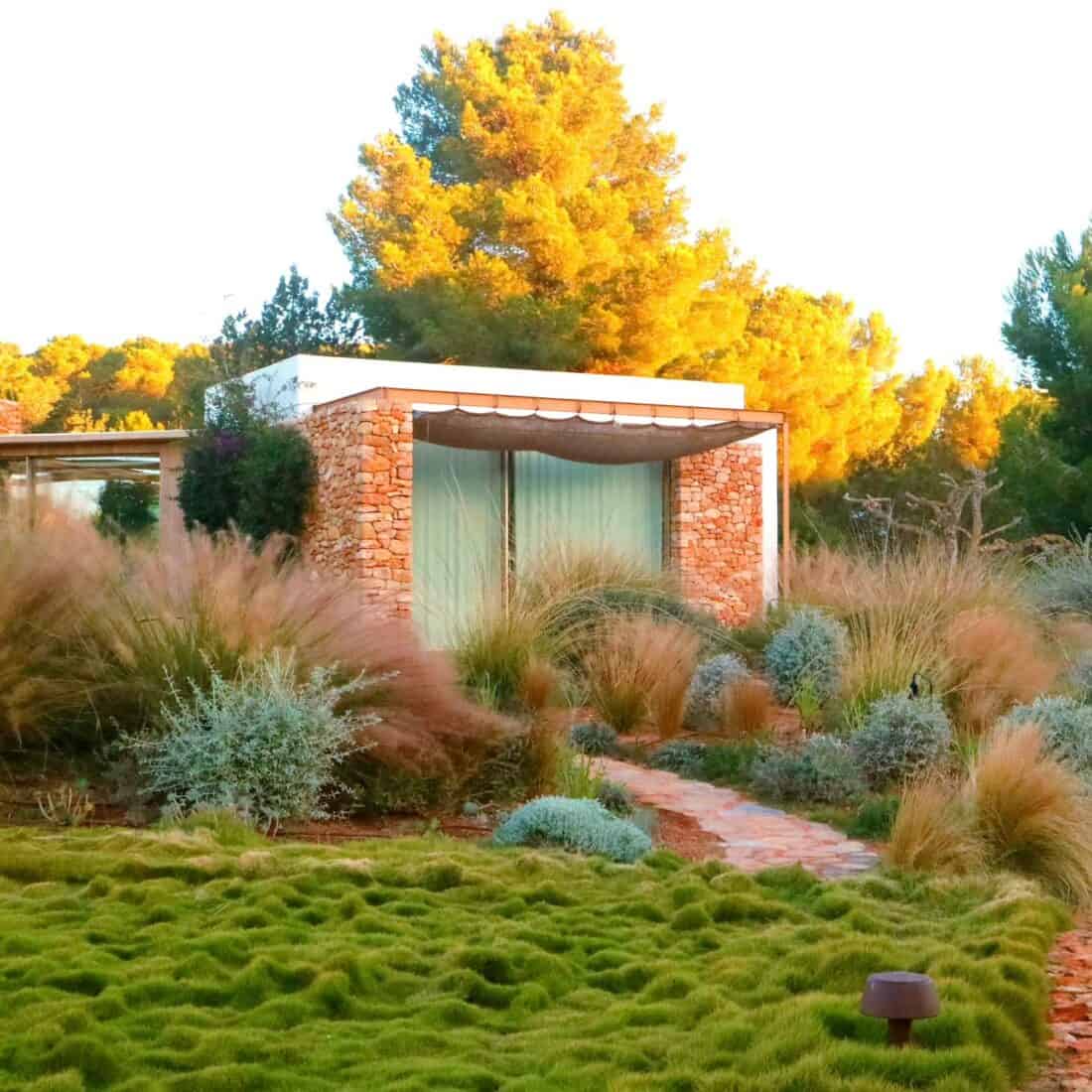
You really have to watch this video – it gives you the experience of this grass – it’s like petting a sharpei with all that extra skin – but it’s grass – can you imagine?
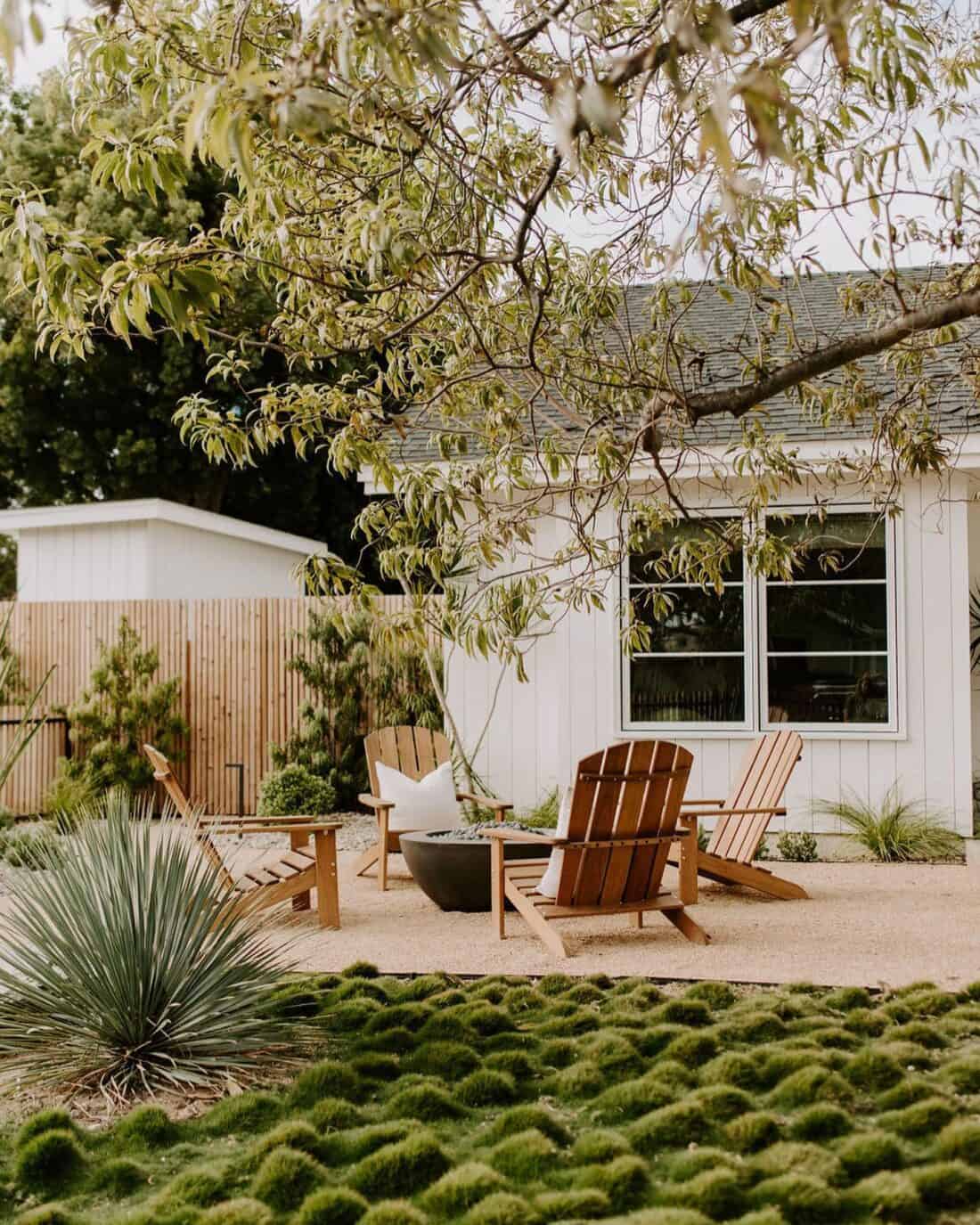
Highlights of No-Mow Grass:
- Low Growth Habit: Slow, cushiony growth of Zoysia tenuifolia means it requires minimal or no -mowing—not more than once or twice a year.
- Drought Tolerance: Excellent drought tolerance, making it an ideal choice for water conservation.
- Less Irrigation Needed: Its deep root system allows it to thrive with less frequent watering, reducing overall water use in landscaping.
- Visual Appeal: The unique, tufted appearance that adds a natural, flowing aesthetic to landscapes, providing a lush, green carpet that remains attractive year-round.
- Versatility: It works well in various settings, from residential lawns to decorative garden borders and slopes.
If you live in a dry place where the grass doesn’t really brown, and you are up for something a little different, then this is a prime choice for you. It is drought tolerant and my favorite part is naturally occurring lumpy humps that kind of grow over things.
Not having grown this, I am curious to know more from the front lines of the gardeners who are cultivating it. If you grow Zoysia tenuifolia, tell us — it is as cool as it looks? Does it feel otherworldly when you walk on it?
I haven’t grown it myself, but it’s the grass I plan to put in when I redo the yard. A neighbor has it, and whenever I walk the dog, he positively bounces with joy to be able to run on it. I’ve snuck a feel with a bare foot, and it’s wonderfully silky and smooth. We’re in Central FL, (Zone 9b), and it stands up well to the mid-summer heat and sub-tropical sun. Beautiful color and fine, shiny leaves.
Wonder why it’s called Korean grass, if as you say it doesn’t like extremely cold temperatures — Korea is known for intensely harsh winters, and extremely hot summers.
Wonder if this would grow in temperate (but dry) Northern CA?
rtuko – I think this stuff is made for temperate dry environments….it actually does survive the cold — but because it takes so long to green back up, I think it it less popular than others that recover faster. If I were in Northern CA I think I would certainly give it a go.
I have no personal experience with this lawn substitute but when I did a Facebook post on it, I heard from a number of Californian designers who said it doesn’t work well north of San Francisco and I think it was David Feix who said it grows so slowly that he prefers some Carex varieties to it.
My parents have had it in their yard since the 70s. It is very spiky and you would absolutely not roll around on it. When we were kids, we used to dare each other to walk on it barefoot. It was the part of the yard nobody could play on because if you fell, you had to touch it. It does grow well in San Diego and it really does tolerate drought well. My dad has been placing plugs of it all over his yard in hopes that someday he will not have to mow anymore. It grows slowly but it does not die easily.